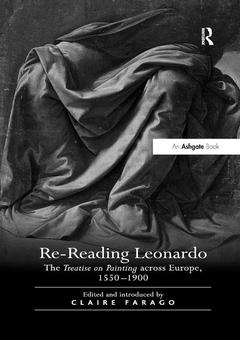Re-Reading Leonardo The Treatise on Painting across Europe, 1550–1900
Coordonnateur : Farago Claire

Date de parution : 03-2017
17.4x24.6 cm
Date de parution : 03-2009
17.4x24.6 cm
Thèmes de Re-Reading Leonardo :
Mots-clés :
Leonardo’s Trattato Della Pittura; Du Fresne; leonardos; Matteo Zaccolini; Leonardo’s Trattato; Trattato Della Pittura; Du Fresne’s Edition; Trichet Du Fresne; Leonardo’s Treatise; Leonardo’s Writings; Leonardo’s Ideas; Codex Urbinas; text; Real Academia De Bellas Artes; Martin Kemp; Charles Errard; Juliana Barone; Leonardo’s Text; Robert Williams; Leonardo’s Teachings; Michael Cole; Accademia Del Disegno; Janis C; Bell; Leonardo’s Theory; Thomas Willette; Abridged Treatise; Catherine M; Soussloff; Belvedere Antinous; J.V; Field; Van Hoogstraten; Pauline Maguire Robison; French Art Theory; Thomas Kirchner; Poussin’s Figures; Javier Navarro de Zuvillaga; Naples Edition; Charlene Villaseñor Black; Poussin; Michèle-Caroline Heck; Bartolomeo Ammanati; Thijs Weststeijn; Richard Woodfield; Geoff Quilley; Chrysa Damianaki; Marcin Fabiański



